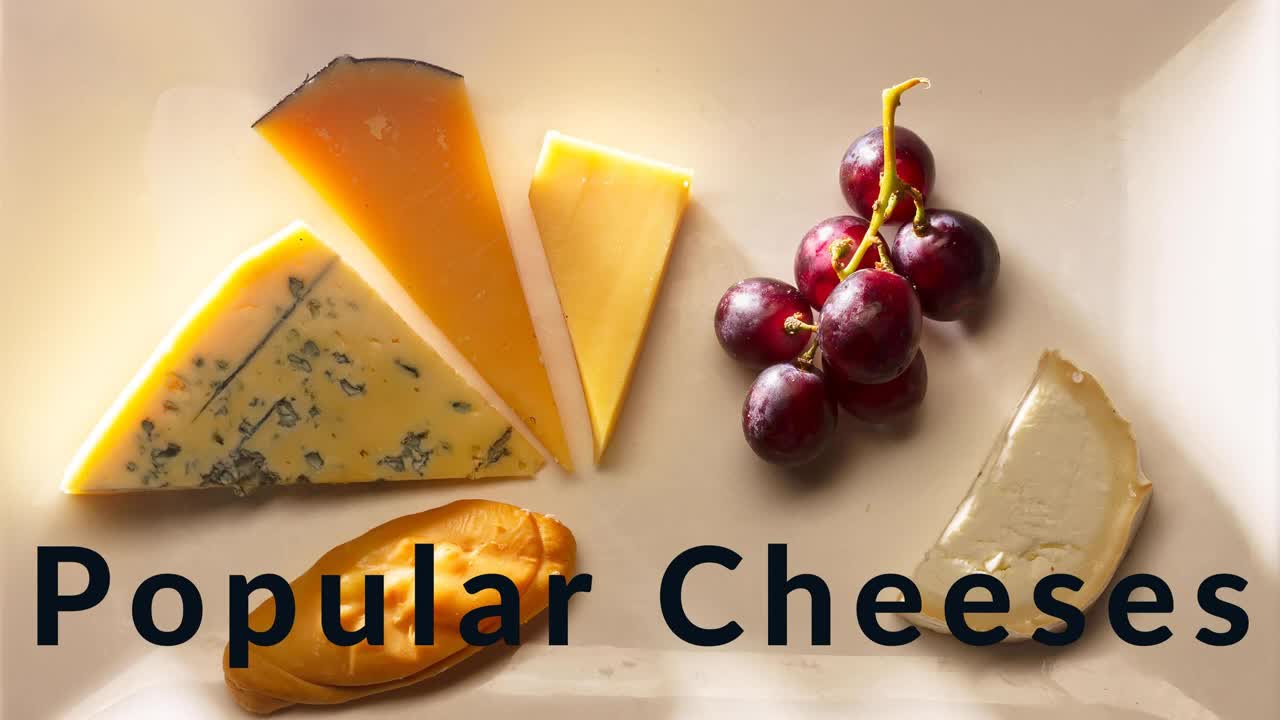Premium Only Content

Popular Cheeses
For a little change of pace, Popular Cheeses is today’s topic as I’m sure I’ve worn you all out with all of those raw milk podcasts. The recipe today is a fun, quick and easy method of making your own fresh cheese, or as the Mexican cheese lovers call it, queso fresco.
I want to take a minute and say welcome to all the new listeners and welcome back to the veteran homestead-loving regulars who stop by the FarmCast for every episode. I appreciate you all so much. I’m so excited to share with you what’s going on at the farm this week.
Today’s Show
• Homestead Life Updates
• Popular Cheeses
• Queso Fresco
Homestead Life Updates
Just a few quick notes here. The most important news first.
Animals Updates
We have a new calf. Cloud gave birth to Luna on the 23rd of November. She was a healthy and vigorous 70-pound heifer. Mom and calf are doing really well. The other cows are drying up for their winter respite from producing milk.
Scott finished all of the blocks of the interior walls in the creamery. He is off to other tasks for the past few days. Fixing fences and preparing the pastures for winter grazing and hay-feeding as we move into the winter season on the homestead.
The sheep and goats are doing well, though we are missing two goat girls. All of the goats were escaping, as goats do on a regular basis. Scott fixed the place in the fence where they were escaping but we are still missing two. Scott also moved the goats from one pasture to another so perhaps the stragglers simply haven’t figured out where everyone is at the moment. There are gates open at various places so they can get inside a pasture and closer to the main group. No sign of them for a couple of days. We will keep our eyes open and do some serious searching if needed.
The Homeless Shelter
I had the pleasure of making a meal for the women staying at the homeless shelter sponsored by our church. We always have an abundance of food and this is a great way to help those who are less fortunate. Homelessness is running rampant in the US. I could just complain about how bad it is and look for the government to step in and do something. However, I wanted to make a real difference. Most of these ladies are either mentally ill and incapable of caring for themselves or have issues with drugs and/or alcohol. It’s a difficult situation and one without an easy solution. I do what I can to ease their troubles with a good hot meal on a cold night. I’ll be providing these meals 2 to 4 times per month throughout this winter. Cooking for 30 is a challenge but I’m up to it.
Last night, along with the meat loaf, green beans and chocolate cake, they got to try my very excellent mac and cheese. It was as big hit. The popular cheeses in that recipe are gruyere and cheddar which I will be touching on in today’s podcast.
Popular Cheeses
Let’s talk about some of the popular cheeses; how to recognize them and what to do with them. As I have talked about previously, cheese results from an interaction between milk and bacteria or an enzyme called rennet. For more information on basic cheesemaking please see my previous podcast, “The Basics of Cheesemaking.”
In a nutshell, the milk proteins (casein) coagulate, forming the solid curds, which then are separated and drained from the liquid whey. Additional processing, both before and after coagulation and whey separation, include: adding special cultures and bacteria, yeast or mold; salting; pressing; aging; and curing. Various combination of these processes create the variety of cheeses available today.
There are several subgroups that I will talk about today. Based on processing techniques, cheeses fall into a few select areas. There are hard cheeses, semi-hard cheeses, semi-soft cheeses, and soft cheeses which come in both fresh and ripened varieties.
I’m going to give a very brief overview and description of a few popular cheeses and how each might be used in your home. Brief overviews and a select few is all I will have time for today. If you’d like more information, please comment below the podcast and I will answer your questions to the best of my ability.
Hard cheeses
Hard cheeses have been aged to reduce moisture content to about 30%. Hard cheeses often are used for grating. Maximum flavor comes from freshly grated cheese. Some of the most popular cheese in the category of “hard” follow.
Asiago: asiago is an Italian cow’s milk cheese with a tangy, nutty flavor and a texture that varies depending on the age of the cheese. Asiago is white to pale yellow and melts easily. Wendy’s fast food restaurant makes an asiago chicken sandwich. This asiago is sliced, not grated but certainly melts well. Yum, yum.
Parmigiano-Reggiano (Parmesan): True Parmigiano-Reggiano is a cow’s milk cheese from an area in Italy near Parma. The name is protected and can only be used when strict production guidelines are followed. The least of which is it must be produced in a specific area near Parma, Italy. It has a sharp, spicy taste and a very hard, dry texture. Parmigiano-Reggiano is always used grated or shaved. The knock-off produced in the United States and elsewhere is called Parmesan and does not match the flavor of the original. Parmigiano-Reggiano is used in gratins and pastas and as a topping for salads and other dishes.
Pecorino-Romano: Made in central and southern Italy from sheep’s milk, Pecorino-Romano has a robust and piquant flavor and is noticeably salty. It can be served as a table cheese or grated for cooking. Again, the name is protected. In the US we know this popular cheese as Romano.
Semi-Hard cheeses
Semi-hard cheeses have a little more moisture content than hard cheese. They range from 30% to 40% moisture, giving them a firm, solid texture. Their flavors can range from mild to quite sharp, depending on age.
Cheddar: With origins in Great Britain, cheddar is now the most popular cheese in the world. This cow’s milk cheese ranges from mild to sharp in flavor and has a dense texture. Orange cheddars owe their color to a vegetable die made from annatto seeds. Uncolored cheddars are pale yellow. Colby is a popular mild American cheddar cheese. Use cheddar in grilling and cooking, as well as on sandwiches and snack trays.
Emmental: Emmental is the original cow’s milk Swiss cheese with very large holes caused by gases that form during ripening. It has a mild, nutty taste and comes in 200-pound wheels. Emmental is the classic choice for fondue, but it also is used in sandwiches and snacks and dessert trays. Swiss cheese is the Americanized Emmental cheese.
Jarlsburg: Although jarlsburg is a cow’s milk cheese from Norway, it’s taste, fat content, and appearance are similar to the Swiss Emmental. Jarlsburg is used on cheese boards, in sandwiches and cooking.
Gruyere: Another Swiss cow’s milk cheese, Gruyere, has a mild, nutty taste, moist texture, and small holes. Because Gruyere melts easily, it is suitable for cooking. It also can be served as an appetizer and as a desert cheese. I use it in fondue.
Monterey Jack: Monterey Jack is a rich cow’s milk cheese from California. It ranges from mild and pale to a sharp and pungent yellow cheese. Monterey Jack sometimes contains peppers or herbs for flavor. It melts well, making it an appropriate choice for cooking.
Provolone: Provolone is a cow’s milk cheese from southern Italy. It has pale yellow color and flavor that ranges from mild to sharp, depending on age. Provolone also comes smoked and in a variety of shapes, including cones, rounds, and cylinders. Use provolone in cooking, as well is in sandwiches or as an appetizer.
Semi-soft cheeses
Semi-soft cheeses have a moisture content of 40% to 50%. Their texture is smooth and sliceable but not spreadable. Semi-soft cheeses can be classified into two groups: the smooth, buttery cheeses and the veined cheeses which owe their distinctive appearance and taste to the veins of blue or blue-green mold running through them.
Smooth, Buttery Cheese
Fontina: Fontina is a nutty, rich cow’s milk cheese from Italy. It has a slightly elastic touch and a few small holes. Use fontina on dessert trays and in cooking.
Gouda: Gouda is a Dutch cow’s milk cheese with a pale-yellow color and a mellow, buttery flavor. Mature Gouda has a firmer texture and a more pronounced flavor. Gouda often is packaged in red or yellow wax-covered wheels. Use gouda in cooking and serve it as an appetizer, with fruit, and on dessert trays.
Havarti: Havarti is a cow’s milk cheese from Denmark. This pale creamy cheese is filled with many small irregular holes. These are mechanical holes related to light pressing as opposed to the Swiss cheese holes resulting from ripening cultures that produce gasses that form the holes. It has a mild, buttery taste and sometimes is flavored with caraway seeds. Havarti makes a fine addition to a snack tray or sandwich.
Veined Cheeses
Gorgonzola: Gorgonzola is a blue veined cow’s milk cheese from Italy. It has a distinct aroma and a tangy, pungent flavor that is sharper in mature cheeses. Its texture is smoother than that of other blue-veined cheeses, such as Roquefort or Stilton. Gorgonzola is used in sauces, on cheese trays, with fruit, and in mixed salads.
Roquefort: Though similar cheeses are produced elsewhere, EU law dictates that only those cheeses aged in the natural Combalou caves of Roquefort-sur-Soulzon may bear the name Roquefort, as it is a recognized geographical indication. As with Emmental, Camembert de Normandie and many others, it has a protected designation of origin. Made from sheep’s milk, Roquefort is a crumbly blue-veined cheese with a pungent taste and strong aroma. Use Roquefort in mixed salads, Roquefort dressing, cooking, and as an appetizer or dessert cheese.
Stilton: Stilton is an English cow’s milk blue-veined cheese. It has a crumbly texture, edible rind, and pungent tang. Traditional compliments to Stilton are fruit, walnuts, and port.
Fresh soft cheeses
Fresh soft cheeses are unripened cheeses with mild flavors and a moisture content of 40% to 80%. The high moisture content gives these cheeses a soft texture and short shelf life.
Cottage Cheese: Cottage cheese gets its name from the fact that it was originally a home or cottage-made cheese. Commercial cottage cheese is made from skim, low fat, reduced fat, or whole cow’s milk and has a bland taste. It comes packed in tubs in small, medium, and large curd forms swimming in cream. Cottage cheese can be used in cooking and as an accompaniment to fruit or raw vegetables and salad.
Queso Fresco: queso fresco is literally Spanish for fresh cheese. It is a Mexican cheese, traditionally made from raw cow milk or combination of cow and goat milk. Queso fresco is a soft, moist, curd style fresh cheese that’s bright, creamy, and pleasantly milky. In traditional Mexican cuisine, queso fresco is used as a crumbled or cubed topping to balance out the flavors in rich and spicy dishes. It’s a perfect stuffing cheese because of its soft yet compact consistency. Today’s recipe is how to make this treat quickly and easily.
Feta: Feta is a great cheese traditionally made from sheep’s milk or a combination of sheep and goats’ milk. After the curd forms, it is salted, sliced, and packed in salt brine. Feta is a crumbly, white cheese with a salty tang that grows stronger with age. It is used in cooked dishes and salads and as an accompaniment to olives and bread.
Chevre: Chevre frais, French version of fresh cheese. It is fresh goat cheese. Chevre is soft and spreadable with a mild but characteristic goat cheese tang. Many times, you will find herb and spice flavored versions. Use chevre in cooking, as a spread with crackers and raw vegetables, or on sandwiches.
Marscapone: Marscapone is an Italian cow’s milk cream cheese with a rich, creamy taste and the silky, smooth texture. Use marscapone in desserts such as tiramisu, in sauces, and as a spread. Marscapone can also be served plain, with a sprinkle of cocoa or liqueur.
Neufchatel: Neufchatel is a cow’s milk cheese, similar to cream cheese, from the Neufchatel region of Normandy. Neufchatel has a soft, creamy texture, and slightly tart flavor that builds as the cheese ripens. Use it the same way as cream cheese. My recipe, Skillet Chicken with Neufchatel Spinach Artichoke Sauce, can be found here.
Mozzarella: Mozzarella is the firmest of the fresh soft cheeses. Traditionally mozzarella is a small oval cheese made with water-buffalo’s milk, although cow’s milk is now a common substitute. Fresh mozzarella is white and quite mild. It melts well in cooked dishes and often is served in salads with fresh tomatoes and olive oil and as a cold appetizer. Commercial mozzarella has a much firmer texture and a blander flavor. That version is often used shredded in cooked dishes and on pizza.
Ricotta: All of the other cheeses before this one have been made from the curd part of the “curds and whey”. Ricotta is an Italian cheese made from the whey part of the “curds and whey” left after making use of the curds for other cheeses, such as mozzarella and provolone. Its uses are similar to those of cottage cheese, but its flavor is slightly sweeter. Ricotta has a smooth, slightly grainy texture. Use ricotta in baked goods and in pasta dishes such as lasagna. Italians also serve ricotta as a dessert cheese, sprinkled with sugar or salt, and as a filling for pastry.
Ripened soft cheeses
Ripened soft cheeses have rich flavors and a buttery smoothness. They are characterized by thin rinds and soft, creamy centers.
Brie: brie is a French cow’s milk cheese with a white crusty rind and a buttery texture that oozes at room temperature when the cheese is fully ripe. Brie has little flavor before it is ripe and will stop ripening once cut. Overripe brie develops a strong ammonia odor. Serve brie when its center begins to bulge slightly. Include brie on appetizer and dessert trays, in sauces, and in pastry. Brie should be served at room temperature.
Camembert: Similar to brie, Camembert is a cow’s milk cheese that originated in the French village of Camembert. It has a slight tang and the pasteurized version is generally milder than brie. Its shape is round as is brie, but with a smaller diameter. Its uses mirror those of brie.
St. Andre: St. Andre is a French triple-cream cheese with a white downy rind and a slightly sweet, buttery taste. It is most often served as a dessert cheese.
Queso Fresco
Want to make queso fresco at home? Here is an easy recipe to make this homemade cheese that is a popular topping for tacos, nachos, enchiladas and tostadas. Many Latin foods use this ingredient and it is so easy.
What You Need
• ½-gallon fresh whole, low-fat or skim milk
• 1 tablespoon coarse salt
• 3 Tbsp white vinegar
What To Do
1. Assemble a cheese cloth lined colander.
2. Heat the milk and salt stirring constantly to prevent sticking.
3. Bring it to a boil, turn the heat to low, and add 3 tablespoons of distilled white vinegar.
4. Watch and stir. Almost immediately, the milk will separate into curds and whey. If not, add one more tablespoon of vinegar. Continue to stir gently to encourage whey extraction and curd formation.
5. Drain into the cheesecloth-lined colander in the sink. Let sit for 5-10 minutes, until the cheese is cool enough to handle. Form the curds into a ball or disc while squeezing excess whey through the cheesecloth. At this point the cheese is ready to eat, but if you prefer a drier, firmer cheese, you can set it on a plate or a sheet pan with a plate on top of it. Use some kind of weight — cans, pots and pans, or books — to press it down for 15 more minutes or up to a couple of hours.
6. Crumble over tacos or enchiladas, or sprinkle into a salad. Slice as a side with your morning sausage and eggs.
Notes:
This cheese is not a melting cheese. It is best enjoyed as is, fried or baked — just as long as you don’t need it to become gooey.
Final Thoughts
That’s a wrap for today’s podcast. I hope your holiday season is going well and you find it in your heart to help those less fortunate than you in whatever way you can. We are blessed with food that others need and, though time is often short, I’m making it happen and getting it to them.
There is a lot more information on types of cheeses available for download in pdf form on our website. Link in the show notes. And give that queso fresco recipe a try. Less that a half hour and you can have your very own homemade cheese.
If you enjoyed this podcast, please hop over to Apple Podcasts, SUBSCRIBE and give me a 5-star rating and review. Also, please share it with any friends or family who might be interested in this type of content.
As always, I’m here to help you “taste the traditional touch.”
Thank you so much for stopping by the homestead and until next time, may God fill your life with grace and peace.
References
• The Basics of Cheesemaking
• Taste of Cheese Free Downloads
• Skillet Chicken with Neufchatel Spinach Artichoke Sauce
Recipe Link
Queso Fresco
To share your thoughts:
• Leave a comment on our Facebook Page
• Share this show on Twitter, Facebook and Instagram
To help the show:
• PLEASE LEAVE A REVIEW for Peaceful Heart FarmCast on Apple Podcasts.
• Subscribe on iTunes, Stitcher Radio, Google Play Music, TuneIn or Spotify
• Donate on Patreon
Website
www.peacefulheartfarm.com
Patreon
www.patreon.com/peacefulheartfarm
Facebook
www.facebook.com/peacefulheartfarm
Instagram
www.instagram.com/peacefulheartfarm/
-
 LIVE
LIVE
Nerdrotic
4 hours ago $6.20 earnedUK Has Fallen, Hollywood DOOM, DC Dysfunction | Friday Night Tights 370
1,961 watching -
 5:52:26
5:52:26
Dr Disrespect
8 hours ago🔴LIVE - DR DISRESPECT - CRONOS: The New Dawn - FIRST IMPRESSIONS
87.8K13 -
 1:30:44
1:30:44
Roseanne Barr
6 hours agoOn the Wrong Side of the Algorithm | The Roseanne Barr Podcast #114
79.9K38 -
 13:53
13:53
TundraTactical
4 hours ago $0.58 earnedFudd Finder : 11 Questions Second Amendment Questions (And Roasts) to Ask Your Friends
13.5K -
 LIVE
LIVE
Wayne Allyn Root | WAR Zone
6 hours agoWAR Zone LIVE | 5 SEPTEMBER 2025
142 watching -
 1:39:50
1:39:50
The White House
6 hours agoPresident Trump Makes Announcements, Sep. 5, 2025
27.6K25 -
 2:28:08
2:28:08
Red Pill News
4 hours agoBombshell Biden Docs Invalidate Autopen Pardons on Red Pill News Live
24.9K19 -
 9:36
9:36
Silver Dragons
3 hours agoGold Price NEW ALL TIME HIGH - $5,000 GOLD NEXT?
12.5K6 -
 LIVE
LIVE
LFA TV
12 hours agoLFA TV ALL DAY STREAM - FRIDAY 9/5/25
756 watching -
 13:43
13:43
The Kevin Trudeau Show Limitless
2 days agoClassified File 3 | Kevin Trudeau EXPOSES Secret Society Brainwave Training
94.3K19